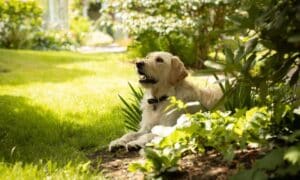Rescue dogs are frequently used to aid in finding missing people, whether in avalanche areas or in the forest, since they have such a fine sense of smell. Just one dog can do the work of nearly two dozen rescue workers, by covering the same amount of ground in a fraction of the time and far more thoroughly. But how are these dogs chosen and what type of dog training do they go through?
The Selection Process
Most rescue dogs are chosen as puppies. The first selection is usually done around two months of age, but the puppies will be weeded out to select the best candidates again at one year, once they`ve matured a bit. While there are some specific breeds (German Shepherd, bloodhounds, etc.) that work better for this type of training, they still need to meet certain standards.
The qualities looked for in these puppies include the following:
- Strong “prey” drive: the ability to hunt something for extended periods of time, which is useful when searching for lost hikers for several hours.
- A calm temperament: excitable or nervous dogs rarely do well in the field and are not selected for training.
- Dog obedience: If a dog isn`t interested in following commands, it won`t be possible to control him in the field, which is essential for tracking.
Puppy training begins once the dog has proven to fulfill all the requirements.
Training a Rescue Dog
The first step in training a young dog to track people is to lay the foundation. This basic puppy training is actually very similar to what any working dog would need to learn and once the puppy has mastered the basic skills, he is ready for more specialized training.
The foundation training includes socialization, desensitizing the dog to external distractions, dog obedience classes and barking on demand, among other things. These dogs also learn to follow hand signals, rather than simply voice commands. This makes it easier to direct a dog that is too far from its trainer to receive voice commands and also allows for silent work when needed.
Once the dog is adept at these skills, it`s time for more advanced puppy training that will prepare him for the real world of scents. One of the first things a puppy learns is to track by air, following a scent carried on the wind or simply lingering in the air. This is very important for areas that don`t hold a scent, such as river beds. The dog is also trained to track scents left on the ground.
To help train these dogs, they are often taken on courses where a person has laid a trail on purpose. The dog is given an object or item of clothing with the person`s scent and is allowed to smell it before casting for the scent in a specific area. In these cases, the person laying the trail will purposely cross roads, walk through water and double back, so the dog can learn to distinguish the true trail. Distractions are also provided, including other animals and people walking across the trail.
Since rescue work often requires the collection of evidence, particularly in the case of death, rescue dog training includes learning to point out objects dropped by the person they are tracking and to handle any evidence with care. The most common method of alerting their masters to the fact that they have found something of value is to bark.
These dogs take part in specialized rescue dog training and in most areas, are required to pass a tracking and ability test in order to become a certified rescue dog. They then need to be recertified every couple of years or so, depending on the area. They provide a very valuable service and are instrumental in the recovery of missing people every year.





